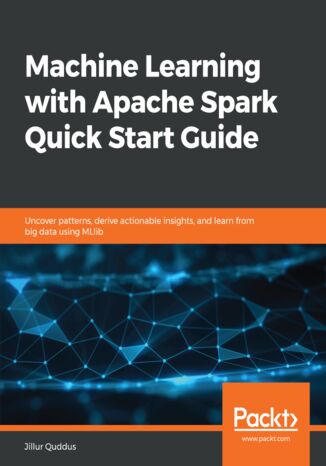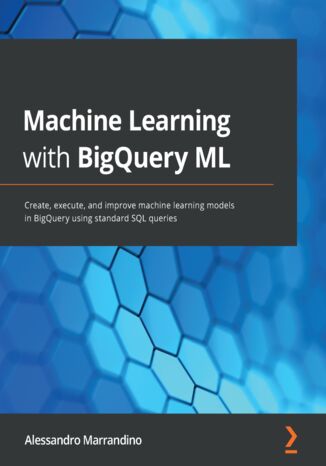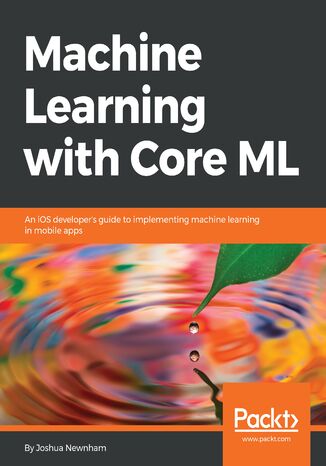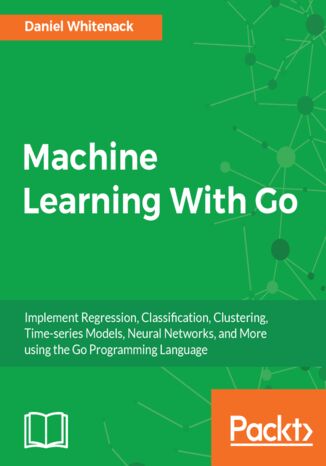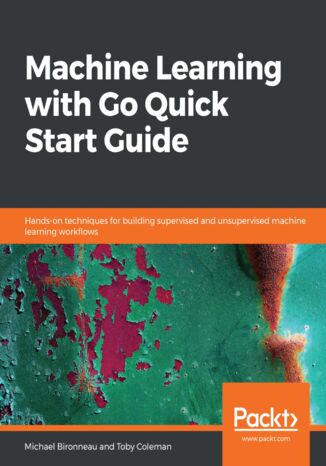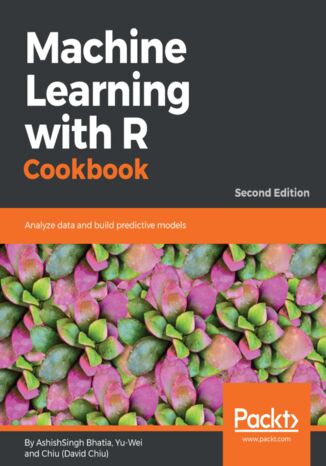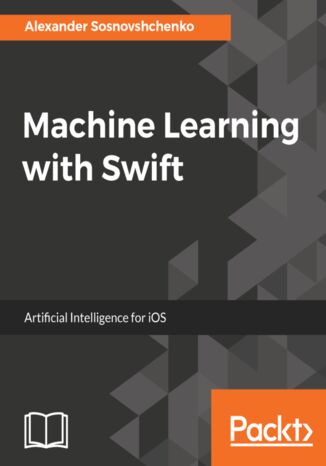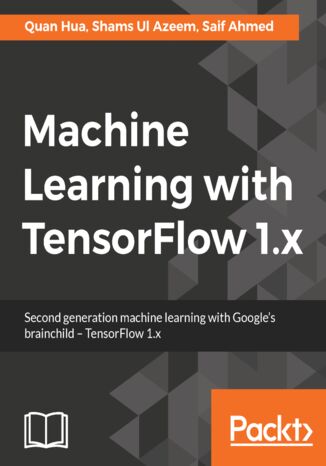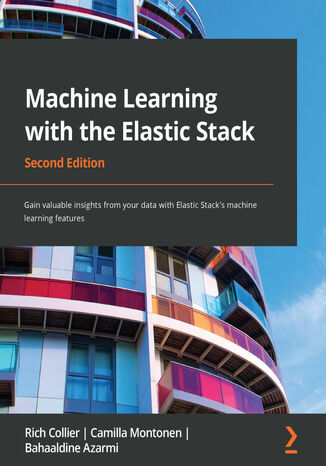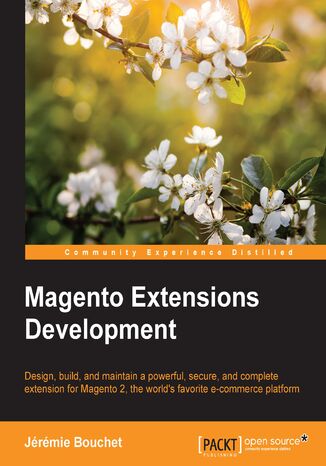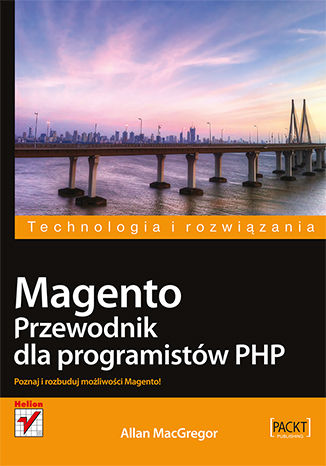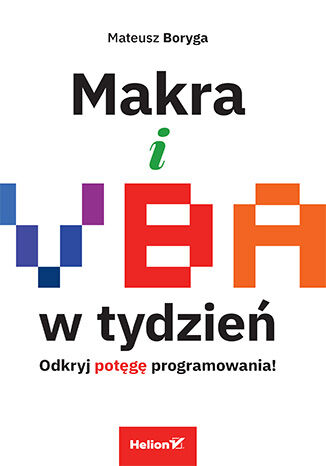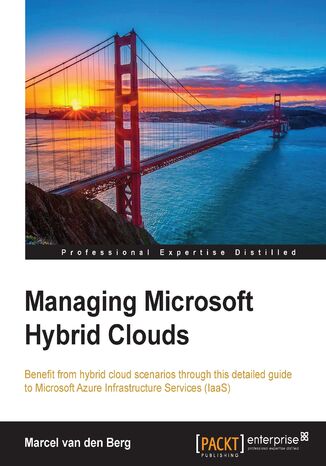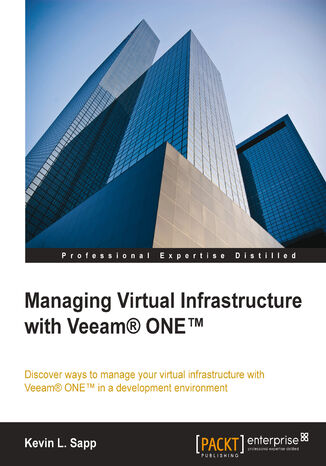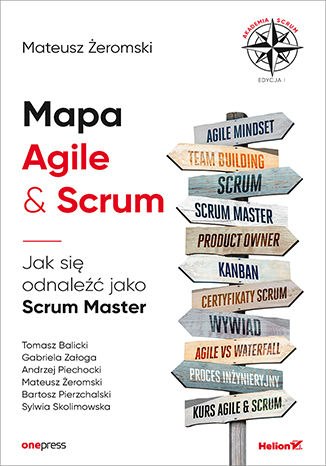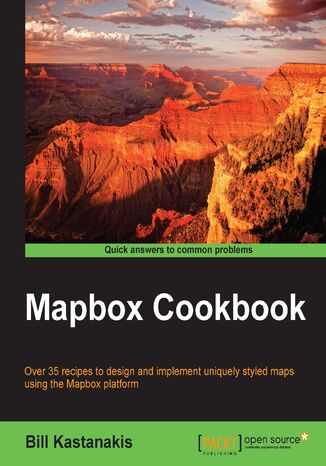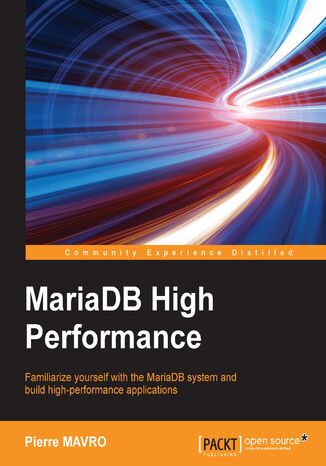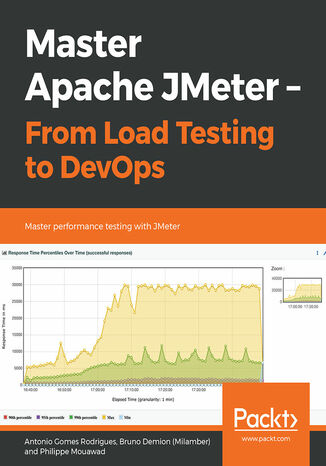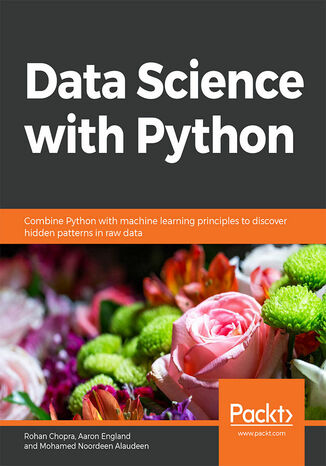Категорії
-
- Біткойн
- Ділова жінка
- Коучинг
- Контроль
- Електронний бізнес
- Економіка
- Фінанси
- Фондова біржа та інвестиції
- Особисті компетенції
- Комп'ютер в офісі
- Комунікація та переговори
- Малий бізнес
- Маркетинг
- Мотивація
- Мультимедійне навчання
- Нерухомість
- Переконання та НЛП
- Податки
- Соціальна політика
- Порадники
- Презентації
- Лідерство
- Зв'язки з громадськістю
- Звіти, аналізи
- Секрет
- Соціальні засоби комунікації
- Продаж
- Стартап
- Ваша кар'єра
- Управління
- Управління проектами
- Людські ресурси (HR)
-
- Architektura i wnętrza
- Безпека життєдіяльності
- Biznes i Ekonomia
- Будинок та сад
- Електронний бізнес
- Ekonomia i finanse
- Езотерика
- Фінанси
- Особисті фінанси
- Бізнес
- Фотографія
- Інформатика
- Відділ кадрів та оплата праці
- Для жінок
- Комп'ютери, Excel
- Бухгалтерія
- Культура та література
- Наукові та академічні
- Охорона навколишнього середовища
- Впливові
- Освіта
- Податки
- Подорожі
- Психологія
- Релігія
- Сільське господарство
- Ринок книг і преси
- Транспорт та спедиція
- Здоров'я та краса
-
- Офісні застосунки
- Бази даних
- Біоінформатика
- Бізнес ІТ
- CAD/CAM
- Digital Lifestyle
- DTP
- Електроніка
- Цифрова фотографія
- Комп'ютерна графіка
- Ігри
- Хакування
- Hardware
- IT w ekonomii
- Наукові пакети
- Шкільні підручники
- Основи комп'ютера
- Програмування
- Мобільне програмування
- Інтернет-сервери
- Комп'ютерні мережі
- Стартап
- Операційні системи
- Штучний інтелект
- Технологія для дітей
- Вебмайстерність
-
- Антології
- Балада
- Біографії та автобіографії
- Для дорослих
- Драми
- Журнали, щоденники, листи
- Епос, епопея
- Нарис
- Наукова фантастика та фантастика
- Фельєтони
- Художня література
- Гумор, сатира
- Інше
- Класичний
- Кримінальний роман
- Нехудожня література
- Художня література
- Mity i legendy
- Лауреати Нобелівської премії
- Новели
- Побутовий роман
- Okultyzm i magia
- Оповідання
- Спогади
- Подорожі
- Оповідна поезія
- Поезія
- Політика
- Науково-популярна
- Роман
- Історичний роман
- Проза
- Пригодницька
- Журналістика
- Роман-репортаж
- Romans i literatura obyczajowa
- Сенсація
- Трилер, жах
- Інтерв'ю та спогади
-
- Археологія
- Bibliotekoznawstwo
- Кінознавство / Теорія кіно
- Філологія
- Польська філологія
- Філософія
- Finanse i bankowość
- Географія
- Економіка
- Торгівля. Світова економіка
- Історія та археологія
- Історія мистецтва і архітектури
- Культурологія
- Мовознавство
- літературні студії
- Логістика
- Математика
- Ліки
- Гуманітарні науки
- Педагогіка
- Навчальні засоби
- Науково-популярна
- Інше
- Психологія
- Соціологія
- Театральні студії
- Богослов’я
- Економічні теорії та науки
- Transport i spedycja
- Фізичне виховання
- Zarządzanie i marketing
-
- Безпека життєдіяльності
- Історія
- Дорожній кодекс. Водійські права
- Юридичні науки
- Охорона здоров'я
- Загальне, компендіум
- Академічні підручники
- Інше
- Закон про будівництво і житло
- Цивільне право
- Фінансове право
- Господарське право
- Господарське та комерційне право
- Кримінальний закон
- Кримінальне право. Кримінальні злочини. Кримінологія
- Міжнародне право
- Міжнародне та іноземне право
- Закон про охорону здоров'я
- Закон про освіту
- Податкове право
- Трудове право та законодавство про соціальне забезпечення
- Громадське, конституційне та адміністративне право
- Кодекс про шлюб і сім'ю
- Аграрне право
- Соціальне право, трудове право
- Законодавство Євросоюзу
- Промисловість
- Сільське господарство та захист навколишнього середовища
- Словники та енциклопедії
- Державні закупівлі
- Управління
-
- Африка
- Альбоми
- Південна Америка
- Центральна та Північна Америка
- Австралія, Нова Зеландія, Океанія
- Австрія
- Азії
- Балкани
- Близький Схід
- Болгарія
- Китай
- Хорватія
- Чеська Республіка
- Данія
- Єгипет
- Естонія
- Європа
- Франція
- Гори
- Греція
- Іспанія
- Нідерланди
- Ісландія
- Литва
- Латвія
- Mapy, Plany miast, Atlasy
- Мініпутівники
- Німеччина
- Норвегія
- Активні подорожі
- Польща
- Португалія
- Інше
- Przewodniki po hotelach i restauracjach
- Росія
- Румунія
- Словаччина
- Словенія
- Швейцарія
- Швеція
- Світ
- Туреччина
- Україна
- Угорщина
- Велика Британія
- Італія
-
- Філософія життя
- Kompetencje psychospołeczne
- Міжособистісне спілкування
- Mindfulness
- Загальне
- Переконання та НЛП
- Академічна психологія
- Психологія душі та розуму
- Психологія праці
- Relacje i związki
- Батьківство та дитяча психологія
- Вирішення проблем
- Інтелектуальний розвиток
- Секрет
- Сексуальність
- Спокушання
- Зовнішній вигляд та імідж
- Філософія життя
-
- Біткойн
- Ділова жінка
- Коучинг
- Контроль
- Електронний бізнес
- Економіка
- Фінанси
- Фондова біржа та інвестиції
- Особисті компетенції
- Комунікація та переговори
- Малий бізнес
- Маркетинг
- Мотивація
- Нерухомість
- Переконання та НЛП
- Податки
- Соціальна політика
- Порадники
- Презентації
- Лідерство
- Зв'язки з громадськістю
- Секрет
- Соціальні засоби комунікації
- Продаж
- Стартап
- Ваша кар'єра
- Управління
- Управління проектами
- Людські ресурси (HR)
-
- Антології
- Балада
- Біографії та автобіографії
- Для дорослих
- Драми
- Журнали, щоденники, листи
- Епос, епопея
- Нарис
- Наукова фантастика та фантастика
- Фельєтони
- Художня література
- Гумор, сатира
- Інше
- Класичний
- Кримінальний роман
- Нехудожня література
- Художня література
- Mity i legendy
- Лауреати Нобелівської премії
- Новели
- Побутовий роман
- Okultyzm i magia
- Оповідання
- Спогади
- Подорожі
- Поезія
- Політика
- Науково-популярна
- Роман
- Історичний роман
- Проза
- Пригодницька
- Журналістика
- Роман-репортаж
- Romans i literatura obyczajowa
- Сенсація
- Трилер, жах
- Інтерв'ю та спогади
-
- Філософія життя
- Міжособистісне спілкування
- Mindfulness
- Загальне
- Переконання та НЛП
- Академічна психологія
- Психологія душі та розуму
- Психологія праці
- Relacje i związki
- Батьківство та дитяча психологія
- Вирішення проблем
- Інтелектуальний розвиток
- Секрет
- Сексуальність
- Спокушання
- Зовнішній вигляд та імідж
- Філософія життя
- Електронні книги
- Інформатика
- Програмування
Програмування
Nasza biblioteka online zawiera szereg publikacji, dzięki którym programowanie nie będzie mieć przed Tobą żadnych tajemnic. Zawarte tu książki przybliżą Ci takie języki jak HTML, JavaScript, Python czy CSS. Dowiesz się dzięki nim także tego, jak tworzyć efektywne algorytmy, projektować aplikacje mobilne, czy dbać o poprawną architekturę informacji w serwisach internetowych.
Every person and every organization in the world manages data, whether they realize it or not. Data is used to describe the world around us and can be used for almost any purpose, from analyzing consumer habits to fighting disease and serious organized crime. Ultimately, we manage data in order to derive value from it, and many organizations around the world have traditionally invested in technology to help process their data faster and more efficiently.But we now live in an interconnected world driven by mass data creation and consumption where data is no longer rows and columns restricted to a spreadsheet, but an organic and evolving asset in its own right. With this realization comes major challenges for organizations: how do we manage the sheer size of data being created every second (think not only spreadsheets and databases, but also social media posts, images, videos, music, blogs and so on)? And once we can manage all of this data, how do we derive real value from it?The focus of Machine Learning with Apache Spark is to help us answer these questions in a hands-on manner. We introduce the latest scalable technologies to help us manage and process big data. We then introduce advanced analytical algorithms applied to real-world use cases in order to uncover patterns, derive actionable insights, and learn from this big data.
BigQuery ML enables you to easily build machine learning (ML) models with SQL without much coding. This book will help you to accelerate the development and deployment of ML models with BigQuery ML.The book starts with a quick overview of Google Cloud and BigQuery architecture. You'll then learn how to configure a Google Cloud project, understand the architectural components and capabilities of BigQuery, and find out how to build ML models with BigQuery ML. The book teaches you how to use ML using SQL on BigQuery. You'll analyze the key phases of a ML model's lifecycle and get to grips with the SQL statements used to train, evaluate, test, and use a model. As you advance, you'll build a series of use cases by applying different ML techniques such as linear regression, binary and multiclass logistic regression, k-means, ARIMA time series, deep neural networks, and XGBoost using practical use cases. Moving on, you'll cover matrix factorization and deep neural networks using BigQuery ML's capabilities. Finally, you'll explore the integration of BigQuery ML with other Google Cloud Platform components such as AI Platform Notebooks and TensorFlow along with discovering best practices and tips and tricks for hyperparameter tuning and performance enhancement.By the end of this BigQuery book, you'll be able to build and evaluate your own ML models with BigQuery ML.
Core ML is a popular framework by Apple, with APIs designed to support various machine learning tasks. It allows you to train your machine learning models and then integrate them into your iOS apps.Machine Learning with Core ML is a fun and practical guide that not only demystifies Core ML but also sheds light on machine learning. In this book, you’ll walk through realistic and interesting examples of machine learning in the context of mobile platforms (specifically iOS). You’ll learn to implement Core ML for visual-based applications using the principles of transfer learning and neural networks. Having got to grips with the basics, you’ll discover a series of seven examples, each providing a new use-case that uncovers how machine learning can be applied along with the related concepts. By the end of the book, you will have the skills required to put machine learning to work in their own applications, using the Core ML APIs
The mission of this book is to turn readers into productive, innovative data analysts who leverage Go to build robust and valuable applications. To this end, the book clearly introduces the technical aspects of building predictive models in Go, but it also helps the reader understand how machine learning workflows are being applied in real-world scenarios.Machine Learning with Go shows readers how to be productive in machine learning while also producing applications that maintain a high level of integrity. It also gives readers patterns to overcome challenges that are often encountered when trying to integrate machine learning in an engineering organization.The readers will begin by gaining a solid understanding of how to gather, organize, and parse real-work data from a variety of sources. Readers will then develop a solid statistical toolkit that will allow them to quickly understand gain intuition about the content of a dataset. Finally, the readers will gain hands-on experience implementing essential machine learning techniques (regression, classification, clustering, and so on) with the relevant Go packages.Finally, the reader will have a solid machine learning mindset and a powerful Go toolkit of techniques, packages, and example implementations.
Michael Bironneau, Toby Coleman
Machine learning is an essential part of today's data-driven world and is extensively used across industries, including financial forecasting, robotics, and web technology. This book will teach you how to efficiently develop machine learning applications in Go.The book starts with an introduction to machine learning and its development process, explaining the types of problems that it aims to solve and the solutions it offers. It then covers setting up a frictionless Go development environment, including running Go interactively with Jupyter notebooks. Finally, common data processing techniques are introduced.The book then teaches the reader about supervised and unsupervised learning techniques through worked examples that include the implementation of evaluation metrics. These worked examples make use of the prominent open-source libraries GoML and Gonum.The book also teaches readers how to load a pre-trained model and use it to make predictions. It then moves on to the operational side of running machine learning applications: deployment, Continuous Integration, and helpful advice for effective logging and monitoring.At the end of the book, readers will learn how to set up a machine learning project for success, formulating realistic success criteria and accurately translating business requirements into technical ones.
Machine Learning with R Cookbook. Analyze data and build predictive models - Second Edition
AshishSingh Bhatia, Yu-Wei, Chiu (David Chiu)
Big data has become a popular buzzword across many industries. An increasing number of people have been exposed to the term and are looking at how to leverage big data in their own businesses, to improve sales and profitability. However, collecting, aggregating, and visualizing data is just one part of the equation. Being able to extract useful information from data is another task, and a much more challenging one. Machine Learning with R Cookbook, Second Edition uses a practical approach to teach you how to perform machine learning with R. Each chapter is divided into several simple recipes. Through the step-by-step instructions provided in each recipe, you will be able to construct a predictive model by using a variety of machine learning packages. In this book, you will first learn to set up the R environment and use simple R commands to explore data. The next topic covers how to perform statistical analysis with machine learning analysis and assess created models, covered in detail later on in the book. You'll also learn how to integrate R and Hadoop to create a big data analysis platform. The detailed illustrations provide all the information required to start applying machine learning to individual projects. With Machine Learning with R Cookbook, machine learning has never been easier.
Machine Learning with R Quick Start Guide takes you on a data-driven journey that starts with the very basics of R and machine learning. It gradually builds upon core concepts so you can handle the varied complexities of data and understand each stage of the machine learning pipeline.From data collection to implementing Natural Language Processing (NLP), this book covers it all. You will implement key machine learning algorithms to understand how they are used to build smart models. You will cover tasks such as clustering, logistic regressions, random forests, support vector machines, and more. Furthermore, you will also look at more advanced aspects such as training neural networks and topic modeling.By the end of the book, you will be able to apply the concepts of machine learning, deal with data-related problems, and solve them using the powerful yet simple language that is R.
Machine Learning with Swift. Artificial Intelligence for iOS
Alexander Sosnovshchenko, Oleksandr Baiev
Machine learning as a field promises to bring increased intelligence to the software by helping us learn and analyse information efficiently and discover certain patterns that humans cannot. This book will be your guide as you embark on an exciting journey in machine learning using the popular Swift language. We’ll start with machine learning basics in the first part of the book to develop a lasting intuition about fundamental machine learning concepts. We explore various supervised and unsupervised statistical learning techniques and how to implement them in Swift, while the third section walks you through deep learning techniques with the help of typical real-world cases. In the last section, we will dive into some hard core topics such as model compression, GPU acceleration and provide some recommendations to avoid common mistakes during machine learning application development. By the end of the book, you'll be able to develop intelligent applications written in Swift that can learn for themselves.
Saif Ahmed, Quan Hua, Shams Ul Azeem
Google's TensorFlow is a game changer in the world of machine learning. It has made machine learning faster, simpler, and more accessible than ever before. This book will teach you how to easily get started with machine learning using the power of Python and TensorFlow 1.x. Firstly, you’ll cover the basic installation procedure and explore the capabilities of TensorFlow 1.x. This is followed by training and running the first classifier, and coverage of the unique features of the library including data ?ow graphs, training, and the visualization of performance with TensorBoard—all within an example-rich context using problems from multiple industries. You’ll be able to further explore text and image analysis, and be introduced to CNN models and their setup in TensorFlow 1.x. Next, you’ll implement a complete real-life production system from training to serving a deep learning model. As you advance you’ll learn about Amazon Web Services (AWS) and create a deep neural network to solve a video action recognition problem. Lastly, you’ll convert the Caffe model to TensorFlow and be introduced to the high-level TensorFlow library, TensorFlow-Slim.By the end of this book, you will be geared up to take on any challenges of implementing TensorFlow 1.x in your machine learning environment.
Rich Collier, Camilla Montonen, Bahaaldine Azarmi
Elastic Stack, previously known as the ELK stack, is a log analysis solution that helps users ingest, process, and analyze search data effectively. With the addition of machine learning, a key commercial feature, the Elastic Stack makes this process even more efficient. This updated second edition of Machine Learning with the Elastic Stack provides a comprehensive overview of Elastic Stack's machine learning features for both time series data analysis as well as for classification, regression, and outlier detection.The book starts by explaining machine learning concepts in an intuitive way. You'll then perform time series analysis on different types of data, such as log files, network flows, application metrics, and financial data. As you progress through the chapters, you'll deploy machine learning within Elastic Stack for logging, security, and metrics. Finally, you'll discover how data frame analysis opens up a whole new set of use cases that machine learning can help you with.By the end of this Elastic Stack book, you'll have hands-on machine learning and Elastic Stack experience, along with the knowledge you need to incorporate machine learning in your distributed search and data analysis platform.
Magento Extensions Development. Click here to enter text
Magento has been revealed as the best and the most popular open source e-commerce platform in the world, with about 250k+ online stores. Magento 2 is the most recent version of this awesome toolset: every new and modern development techniques are used to offer a real modular approach and powerful architecture. The book will support you in the writing of innovative and complex extensions. Starting from the beginning, we will cover how to set up a development environment that allows you to be really efficient in your functionality writing, including GIT registering and many other development tools. We then move on to provide a large overview of the best practices to scale your module in a high-load environment. After these foundations, you will see how to use test driven-development (TDD) and unit tests to handle your code. We then build a complex extension together, step by step, and internationally-ready. Next, you will find out how to protect the users’ data. Finally, we will take a look a publishing the extension on the new Magento Connect marketplace and how to protect your intellectual property.After you read this book, you will know everything you need to know to become an invaluable extension editor, whether it is for your customers’ needs or for your own requirements.
Magento. Przewodnik dla programistów PHP
Poznaj i rozbuduj możliwości Magento! Magento to platforma pozwalająca na prowadzenie handlu w sieci. Jej pierwsza wersja ukazała się w 2008 roku i od tego czasu platforma jest ciągle rozwijana. Magento powstało w oparciu o Zend Framework, a fakt ten cieszy wielu programistów PHP. Jeżeli chcesz poznać możliwości tej platformy, jeżeli chcesz wdrożyć ją, dostosować do własnych potrzeb lub napisać nowy moduł, to masz w rękach doskonałą książkę. Ten przewodnik pozwoli Ci zgłębić tajniki Magento. W pierwszej kolejności poznasz architekturę platformy, niezbędne narzędzia oraz techniki — to pomoże Ci sprawnie poruszać się w środowisku Magento. Po tym wstępie przejdziesz do bardziej zaawansowanych zagadnień. Poznasz model EAV oraz nauczysz się rozszerzać interfejs użytkownika. Ponadto przekonasz się, że stworzenie nowego modułu w panelu administracyjnym wcale nie musi być takie trudne. W tej książce znajdziesz również dokładny opis API platformy oraz dowiesz się, jak testować stworzony kod. Na sam koniec zobaczysz, w jaki sposób przygotować Twój produkt do wdrażania i dystrybucji. Książka ta jest obowiązkową lekturą dla wszystkich programistów PHP pracujących w środowisku Magento. Dzięki tej książce: poznasz API Magento zaznajomisz się z modelem EAV przetestujesz stworzony kod przygotujesz do dystrybucji i wdrożenia Twój moduł Wykorzystaj potencjał platformy Magento!
Makra i VBA w tydzień. Odkryj potęgę programowania!
Nauka programowania dla nieprogramistów Jeśli zastanawiasz się nad przekwalifikowaniem i karierą w branży informatycznej albo chcesz poszerzyć swoje umiejętności o programowanie, ale wydaje Ci się ono czarną magią, zapewniamy - w programowaniu nie ma nic z magii. To proces polegający na tworzeniu zbioru instrukcji, dzięki którym komputer wykona to, czego od niego oczekujesz. Jak się nauczyć pisać te instrukcje? Jeśli dysponujesz pakietem Microsoft Office i arkuszem kalkulacyjnym Excel, to masz też dostęp do języka programowania VBA (Visual Basic for Applications). Autor tego poradnika pokaże Ci, że programowania najłatwiej nauczyć się właśnie w VBA. Pośród innych użytecznych narzędzi bowiem Microsoft Excel posiada również rejestrator makr. To on zamienia klikane w Excelu działania na pełnoprawny kod VBA. Dzięki właściwemu użyciu rejestratora możliwe jest więc proste generowanie kodu, na którym można dalej pracować. Wygeneruj kod za pomocą rejestratora makr Excela Zamień go na uniwersalny kod, przydatny w wielu projektach Zobacz najpopularniejsze gotowe do użycia fragmenty kodu VBA Poznaj dobre praktyki programowania w VBA Przejdź na wyższy poziom kodowania i doceń, jak wiele czasu dzięki temu oszczędzasz O książce w mediach: Recenzja książki [Recenzje na widelcu]
Difficulty in accurately capturing and managing requirements is the most common cause of software project failure. Learning how to analyze and model requirements and produce specifications that are connected to working code is the single most fundamental step that you can take toward project success. This book focuses on a delineated and structured methodology that will help you analyze requirements and write comprehensive, verifiable specifications.You'll start by learning about the different entities in the requirements domain and how to discover them based on customer input. You’ll then explore tried-and-tested methods such as impact mapping and behavior-driven development (BDD), along with new techniques such as D3 and feature-first development. This book takes you through the process of modeling customer requirements as impact maps and writing them as executable specifications. You’ll also understand how to organize and prioritize project tasks using Agile frameworks, such as Kanban and Scrum, and verify specifications against the delivered code. Finally, you'll see how to start implementing the requirements management methodology in a real-life scenario.By the end of this book, you'll be able to model and manage requirements to create executable specifications that will help you deliver successful software projects.
Mapa Agile & Scrum. Jak się odnaleźć jako Scrum Master
Lepiej, szybciej, skuteczniej! SCRUM, czyli zwinne (ang. Agile) podejście do wytwarzania usług i produktów, wymyślono po to, by realizować zadania w krótszym czasie, z użyciem mniejszej ilości zasobów i w jak najlepszym "dopasowaniu" do oczekiwań klienta. Zespoły pracujące w Scrumie, starzy agile'owi wyjadacze, zwykle sobie to podejście chwalą i chętnie korzystają z niego przy prowadzeniu kolejnych projektów. Niestety dla osoby, która dopiero zaczyna pracować w podejściu zwinnym, sprawa zwykle nie jest prosta. Wdrożenie się do "zwinności" wymaga czasu i wskazówek od doświadczonych Scrum Masterów. Skoro mowa o wskazówkach od bardziej doświadczonych praktyków Scrumu - książka, którą Ci proponujemy, stanowi świetny wstęp do tego, by zacząć działać zwinnie. Jej autor, sam znawca tematu, praktykujący Agile & Scrum oraz dzielący się tą wiedzą z uczestnikami szkoleń, zebrał w tej publikacji wskazówki własne i wielu innych Scrum Masterów. Poczynając od zupełnych podstaw i zasad Scruma, przez problemy, z jakimi spotkasz się w codziennej pracy nad projektami, aż po kwestie dyskusyjne, postrzegane z różnych punktów widzenia - niniejszy poradnik stanowi swego rodzaju kompendium praktycznej wiedzy na temat Scruma i Agile'a podany w przystępnej hasłowej formie. Dzięki temu będzie Ci się łatwo po nim poruszać. Książka składa się z dwóch głównych części. Pierwsza, napisana wspólnie przez praktyków, opiera się na naszych doświadczeniach. Nie boimy się poruszać ważnych tematów, nie pomijamy ich. Stworzyliśmy przewodnik, w którym poruszamy wiele różnych obszarów i wierzymy, że każdy otwarty czytelnik znajdzie coś dla siebie. Druga część jest transkrypcją kursu Agile & Scrum. Współautorzy pierwszej części książki: Bartosz Pierzchalski - Z wykształcenia pedagog resocjalizacyjny, zawodowo związany z branżą badawczą, w której zajmuje się usprawnianiem procesów i doskonaleniem firmowych produktów. Swoje kompetencje rozwijał jako menedżer projektów, coach mocnych stron, trener programów społecznych oraz instruktor sportów walki. Od 2020 r. związany z podejściem zwinnym, aktywnie propaguje wykorzystanie Scruma w przestrzeniach zawodowych i prywatnych. Sylwia Skolimowska - Posiada wieloletnie doświadczenie jako Kierownik Projektów IT w branży mediowej. W związku ze swoimi zainteresowaniami dotyczącymi projektów i poszerzaniem wiedzy w tym zakresie została Scrum Masterem. Obecnie wykorzystuje zdobytą wiedzę i doświadczenie w swoim środowisku zawodowym. Mateusz Żeromski - Niepoprawny optymista, który obrał sobie za cel popularyzowanie Agile'a i Scruma. Założyciel meet-upu Scrum Warsaw, autor dwóch książek oraz Akademii Scrum, w ramach której powstała ta książka. Wierzy w zespoły, w to, że w pracy można naładować baterie, odpocząć od codzienności, miło spędzić czas - ale tylko wtedy, gdy mamy dobry i mocny zespół. Niech #Scrum będzie z Wami! Gabriela Załoga - Wspiera organizacje w procesie budowania wartościowych produktów. Doświadczenie ze sportu wykorzystuje podczas budowania mistrzowskich zespołów. Balansuje pomiędzy biznesem a zespołami technologicznymi. Pasjonatka odkrywania i rozwijania produktów. Nie lubi marnotrawstwa, dlatego nieustannie kwestionuje status quo. Czerpie energię od ludzi, ceni wartościowe dyskusje, zwłaszcza te przy kawie. Prywatnie minimalistka. Lubi otaczać się dobrą sztuką i designem. Odpoczywa, spacerując z psem, czytając, medytując lub praktykując jogę. Andrzej Piechocki - Entuzjasta zwinności. Absolwent zarządzania i marketingu na Uniwersytecie im. A. Mickiewicza w Poznaniu, z doświadczeniem w różnych branżach. 100% Scrum Master licensed by PSM II /scrum.org/ Tomasz Balicki - Strategy & Operations Manager, specjalista w zakresie zarządzania projektami międzynarodowymi (Agile, Scrum Master), planowania marketingowego, strategii klienta i kreowania marki. Jest menedżerem operacyjnym z ponad 10-letnim międzynarodowym doświadczeniem zawodowym, zorientowanym na procesy, procedury i projekty w zakresie budowania nowych ścieżek rozwoju, zarządzania marką i rozwoju biznesu. Jego mocnymi stronami są efektywne realizowanie KPI związane z wdrażaniem innowacji w realizowanych kampaniach CRM, targetowanie, sekwencjonowanie, testy A/B.
Bill Kastanakis, Vasileios Kastanakis
Maps are an essential element in today’s location aware applications. Right from displaying earth surface information to creating thematic maps displaying plethora of information, most of the developers lack the necessary knowledge to create customizable maps with combination of various tools and libraries. The MapBox platform is one such platform which offers all the tools and API required to create and publish a totally customizable map.Starting with building your first map with the online MapBox Editor, we will take you all the way to building advanced web and mobile applications with totally customizable map styles. Through the course of chapters we’ll learn CartoCSS styling language and understand the various components of MapBox platform and their corresponding JavaScript API.In the initial few chapters we will dive deeper into the TileMill and MapBox Studio components of MapBox and use them to generate custom styled map tiles and vector maps. Furthermore, we will publish these custom maps using PHP, node.js and third party tools like Geoserver.We’ll also learn to create different visualizations and map styles like a choropleth map, a heat map and add user interactivity using a UFTGrid. Moving on, we dive into advanced concepts and focus on integration with third party services like Foursquare, Google FusionTables, CartoDB, and Torque to help you populate and even animate your maps.In the final chapter we’ll learn to use the Mapbox SDK to create and publish interactive maps for the iOS platform. By the end of this book, you will learn about MapBox GL and how to create a fully functional, location-aware mobile app, using the maps styles created in the recipes.
Mapowanie historyjek użytkownika. Przepis na produkt idealny
Mapowanie historyjek użytkownika. Jak zaprojektować produkt idealny Podczas projektowania wielu procesów produkcyjnych, łącznie z budową oprogramowania, za kluczowe kryteria uznaje się szybkość wykonywania zadań, wydajność czy niskie koszty. Tymczasem opracowanie produktu o wyjątkowej wartości rynkowej wymaga nieco innego podejścia. Celem produkcji nie jest przecież produkcja sama w sobie. Aby kiedyś osiągnąć wysokie zyski, planowanie procesów produkcji musi opierać się na wymaganiach użytkowników, bez zatracania się w szczegółach produktu. To jest właśnie myśl przewodnia metody mapowania historyjek użytkownika tworzonych na potrzeby procesów agile. Ta odkrywcza książka, kierowana przede wszystkim do product managerów, analityków biznesowych i osób zajmujących się wrażeniami użytkownika, ma na celu pokazanie, w jaki sposób można w pełni wykorzystać zalety procesów agile i lean poprzez mapowanie historyjek. Technika ta umożliwia nakreślenie obrazu całości, który niekiedy trudno zrekonstruować na podstawie wielkiego zbioru osobnych historii. Modyfikowalne mapy historyjek umożliwiają zespołowi prowadzenie bardziej wnikliwych dyskusji o projekcie w ramach procesu produkcyjnego. W efekcie zespół sprawnie buduje wspólną wizję tego, co chce stworzyć, co przybliża produkt do osiągnięcia sukcesu. W tej książce znajdziesz: ogólne zasady mapowania historyjek, wyjaśnienie sposobu mapowania historyjek, opis wykorzystania mapowania historyjek w projektach agile oraz lean, omówienie cyklu rozwojowego historyjek, począwszy od wskazania okazji do rozwoju i odkrywania możliwości, liczne ćwiczenia i przykłady tworzenia map historyjek i ich modyfikowania, przedstawienie procesu prowadzącego od mapowania historyjek do powstania sprawnego oprogramowania. Mapowanie to prawdziwe źródło inspiracji!
Mapping with ArcGIS Pro. Design accurate and user-friendly maps to share the story of your data
ArcGIS Pro is a geographic information system for working with maps and geographic information. This book will help you create visually stunning maps that increase thelegibility of the stories being mapped and introduce visual and design concepts intoa traditionally scientific, data-driven process. The book begins by outlining the stepsof gathering data from authoritative sources and lays out the workflow of creating a great map. Once the plan is in place you will learn how to organize the Contents Pane in ArcGIS Pro and identify the steps involved in streamlining the production process. Then you will learn Cartographic Design techniques using ArcGIS Pro's feature set to organize thepage structure and create a custom set of color swatches. You will be then exposedto the techniques required to ensure your data is clear and legible no matter the sizeor scale of your map. The later chapters will help you understand the various projectionsystems, trade-offs between them, and the proper applications of them to make sureyour maps are accurate and visually appealing. Finally, you will be introducedto the ArcGIS Online ecosystem and how ArcGIS Pro can utilize it within theapplication. You will learn Smart Mapping, a new feature of ArcGIS Online that willhelp you to make maps that are visually stunning and useful.By the end of this book, you will feel more confident in making appropriate cartographic decisions.
Master Apache JMeter - From Load Testing to DevOps. Master performance testing with JMeter
Antonio Gomes Rodrigues, Bruno Demion (Milamber), Philippe Mouawad
Load tests help identify the maximum number of requests a software system can handle. One popular open source tool for load testing is JMeter. By leveraging the features and capabilities of JMeter, you can perform extensive load testing and fix issues in your application before they become problematic. This book is written by JMeter developers and begins by discussing the whole process, including recording a script, setting it up, and launching it, enabling you to almost immediately start load testing. You'll learn the best practices that you must follow while designing test cases. You'll also explore the different protocols offered by JMeter through various real-world examples. Finally, you'll see how to integrate JMeter into the DevOps approach and create professional reports. You'll discover ways to use the eco-system of JMeter to integrate new protocols, enrich its monitoring, and leverage its power through the use of the cloud. By the end of this book, you'll know all that's needed to perform comprehensive load testing on your applications by using all the best practices and features of JMeter.
Rohan Chopra, Aaron England, Mohamed Noordeen Alaudeen
Data Science with Python begins by introducing you to data science and teaches you to install the packages you need to create a data science coding environment. You will learn three major techniques in machine learning: unsupervised learning, supervised learning, and reinforcement learning. You will also explore basic classification and regression techniques, such as support vector machines, decision trees, and logistic regression.As you make your way through the book, you will understand the basic functions, data structures, and syntax of the Python language that are used to handle large datasets with ease. You will learn about NumPy and pandas libraries for matrix calculations and data manipulation, discover how to use Matplotlib to create highly customizable visualizations, and apply the boosting algorithm XGBoost to make predictions. In the concluding chapters, you will explore convolutional neural networks (CNNs), deep learning algorithms used to predict what is in an image. You will also understand how to feed human sentences to a neural network, make the model process contextual information, and create human language processing systems to predict the outcome.By the end of this book, you will be able to understand and implement any new data science algorithm and have the confidence to experiment with tools or libraries other than those covered in the book.
Mastering Akka. A hands-on guide to build application using the Akka framework
For a programmer, writing multi-threaded applications is critical as it is important to break large tasks into smaller ones and run them simultaneously. Akka is a distributed computing toolkit that uses the abstraction of the Actor model, enabling developers to build correct, concurrent, and distributed applications using Java and Scala with ease. The book begins with a quick introduction that simplifies concurrent programming with actors. We then proceed to master all aspects of domain-driven design. We’ll teach you how to scale out with Akka Remoting/Clustering. Finally, we introduce Conductr as a means to deploy to and manage microservices across a cluster.

